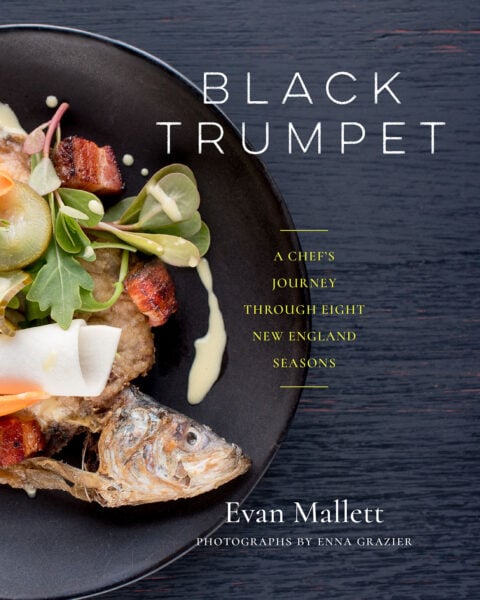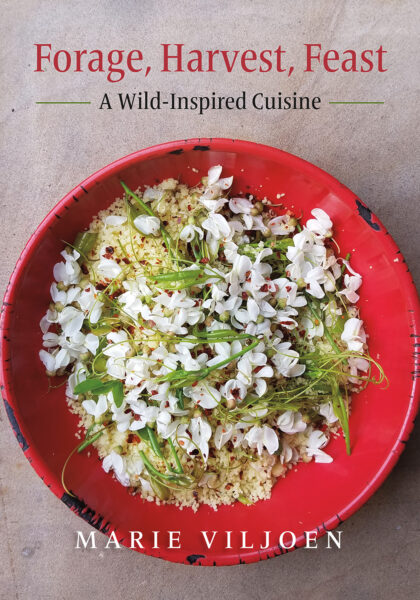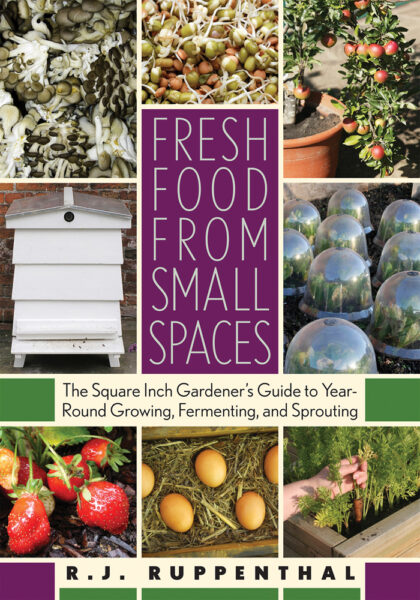Recipe: Barbecued Eggplant Stacks with Coyote Mint Sauce and Chèvre
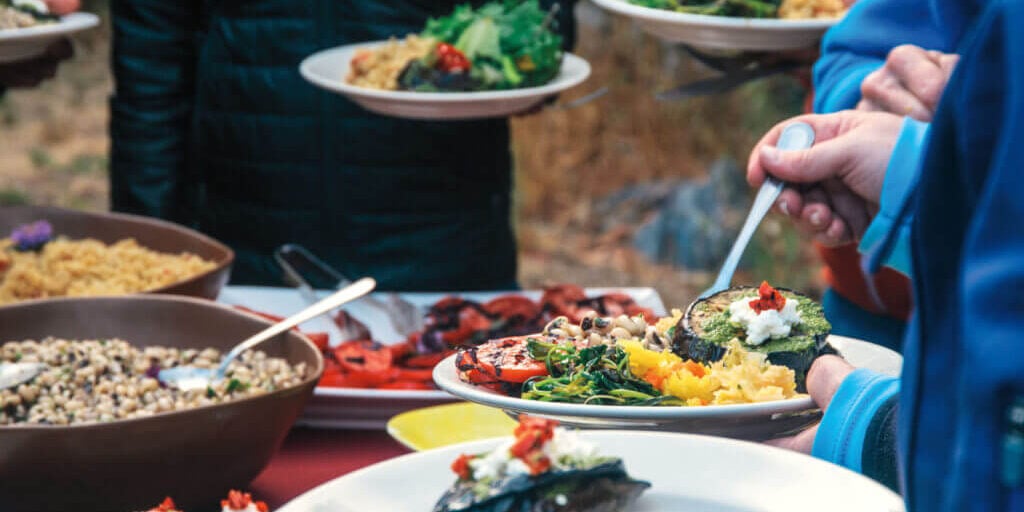
With summer in full swing, many are making good use of their outdoor grills. Tender grass fed steaks or free range chicken are often the go-to options, but the possibilities for a grilled meal are endless. At the Occidental Arts and Ecology Center, a summer favorite is Barbecued Eggplant Stacks with Coyote Mint sauce and Chèvre. Whether you’re a dedicated vegetarian or a meat-eater looking to expand your grilling horizons, you’ll find this dish makes for an easy and filling seasonal meal.
This recipe is from The Occidental Arts and Ecology Center Cookbook by The Occidental Arts and Ecology Center with Olivia Rathbone. It has been adapted for the web.
Photo by: Tali Aiona
Barbecued Eggplant Stacks with Coyote Mint Sauce and Chèvre
Coyote mint, Monardella villosa, is native to the California Coastal Range and the Sierra Nevada foothills and is a fabulous drought-hardy plant with purple pompom flowers and potent mint flavor. It is planted in our core-area dry garden and grows wild on the hilly coastal trails between OAEC and the ocean.
While some cooks insist on pre-salting and draining eggplants to draw out the bitter, with garden-fresh eggplant, this is unnecessary. Buy eggplants only in the summer season when they are fresh, not imported from far away.
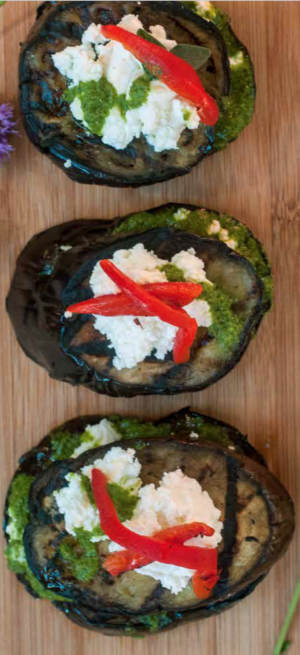
Photo by: Tali Aiona
Ingredients
Serves 4 to 6
- 1 tablespoon coriander seeds
- 1 tablespoon cumin seeds
- 2 cloves garlic
- Salt and pepper to taste
- 1⁄2 cup coyote mint leaves, or 1⁄4 cup spearmint and 1⁄4 cup oregano
- 1⁄2 cup parsley
- Juice of 1 lemon
- 1⁄2 cup olive oil, plus more for grilling
- 1 tablespoon finely chopped Serrano chile
- 3 large eggplants
- 1 cup soft chèvre
- Garnish: thinly sliced roasted red peppers or halved cherry tomatoes
Serves 30–40
- 3 tablespoons coriander seeds
- 3 tablespoons cumin seeds
- 5 cloves garlic
- Salt and pepper to taste
- 3 cups coyote mint leaves, or 11⁄2 cups spearmint and 11⁄2 cups oregano
- 3 cups parsley
- Juice of 4 lemons
- 3 cups olive oil, plus more for grilling
- 1⁄4 cup finely chopped Serrano chile
- 20 large eggplants
- 4 cups soft chèvre
- Garnish: thinly sliced roasted red peppers or halved cherry tomatoes
Light the barbecue grill, and while the coals are heating up, make the sauce. In a small, dry cast-iron skillet, toast the cumin and coriander seeds until they begin to smell nutty. Using a mortar and pestle or herb grinder, crush the seeds, garlic, and a pinch of salt into a fine paste. Add the coyote mint, parsley leaves, and lemon juice and continue processing until a bright-green sauce is formed. Add the olive oil and stir in the chopped chile. Adjust the salt and pepper to taste. Reserve.
Slice the eggplant crosswise into large 1⁄2-inch-thick round steaks—you should get around six slices per large globe-style eggplant. Sprinkle with salt and drizzle with olive oil. When the flames have died down to a nice bed of medium-hot coals, grill the eggplant until they’re soft and striped with crispy grill marks. Reserve.
For each portion, layer slices of eggplant with a scant tablespoon of chèvre and a tablespoon of sauce, three stories high. Top with a final, generous drizzle of sauce that runs down the sides, a dollop of chèvre, and garnish with something red for contrast—either a few thin slivers of roasted red pepper or a few halved cherry tomatoes mounded on top.
Recent Articles
Chances are, you’ve seen cattails growing on the edge of your local lake or stream at least once or twice. Instead of just passing these plants, try foraging for and cooking them to create delicious seasonal dishes! The following excerpt is from The New Wildcrafted Cuisine by Pascal Baudar. It has been adapted for the…
Read MoreGarlic mustard: while known as “invasive,” this plant can be consumed in its entirety and has great nutritional value. Plus, the garlic-flavor is a perfect addition to any recipe that calls for mustard! The following are excerpts from Beyond the War on Invasive Species by Tao Orion and The Wild Wisdom of Weeds by Katrina…
Read MoreOh, honeysuckle…how we love thee. If only there was a way to capture the sweet essence of this plant so we could enjoy it more than just in passing. Luckily, foraging and some preparation can help make that happen! Here’s a springtime recipe that tastes exactly like honeysuckle smells. The following excerpt is from Forage,…
Read MoreIntroducing…your new favorite brunch dish! This whole broccoli frittata is packed with fresh, wildcrafted flavors that are bound to help you start your day off on the right foot. The following is an excerpt from The Forager Chef’s Book of Flora by Alan Bergo. It has been adapted for the web. RECIPE: Whole Broccoli Frittata…
Read MoreWondering where to forage for greens this spring? Look no further than hedges, which serve as natural havens for wild greens and herbs! The following is an excerpt from Hedgelands by Christopher Hart. It has been adapted for the web. Food from Hedges: Salads and Greens Let’s start by looking at all the wild foods…
Read More

